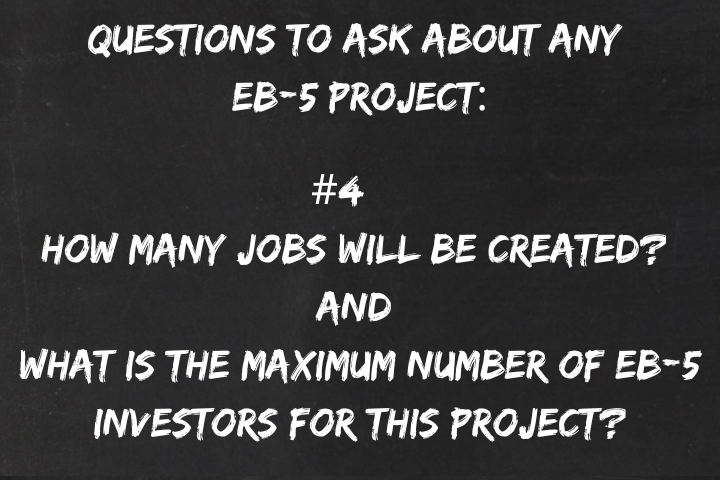
16 Jul How Many Investors are there in this Project?
Question #4 – How many jobs will be created and what is the maximum number of EB-5 investors for this project?
When looking at an EB-5 project, it is important to understand how many jobs the overall project is projected to create and what will be the maximum number of EB-5 investors in the project. In order to satisfy the requirements of the EB-5 program, the project must create 10 jobs for each investor – but how are these jobs assigned? How does job allocation work in practice? Is there a chance the project will create less jobs than expected?
If you are the first investor in a project, you will likely be assigned the first ten jobs the project creates. If a project with 10 investors is anticipated to create 100 jobs, but only 80 are actually created, then only the first 8 investors are allocated the requisite number of jobs. The first 8 investors are credited with 10 jobs each and the remaing 2 investors have no job allocation. This means that the earlier you invest in a project, the “safer” your position is with regard to job creation.
Of course, this also depends on how many total jobs are created by the project and how many investors invest in the project.
For example, a project that is expected to create 2000 jobs and accepts 200 investors, should be able to fulfill the job creation requitement of 10 jobs per investor, but doesn’t leave much of a cushion for the later investors in the project. However, the same project that creates 2000 jobs but accepts only 50 investors, yields 40 jobs per investor and therefore has a large “job creation cushion” that serves to protect investors, especially those who invest later in the capital raise. Since the project is only required to create 500 total jobs to satisfy the needs of all investors, the project with 50 investors is more likely to satisfy the job creation requirements for all investors.
At AscendAmerica we constantly work to mitigate investor risk, and therefore, we limit the number of investors that we take into a project, even if the job creation numbers can support a much greater number of investors.
When we look at an EB-5 project we assess the total cost of the project, the developer equity and then determine the amount of the EB-5 fund we will raise for the project.
Our economist projects how many jobs the overall project will create, and then we determine a very significant “job cushion” that will allow our investors to be confident that the job creation requirement will be fulfilled.
For example, our 325 Kent project created over 2,500 jobs and was able to support 250 investors. However, utilizing our conservative approach, we limited subscription to only 54 investors, yielding a large job creation cushion per investor. Additionally, at the time we began the EB-5 raise for this project, the required 540 jobs for the 54 investors were not only a projection, but because construction had already commenced, the jobs had already been created and investors were no longer concerned with the need to fulfill that requirement.

